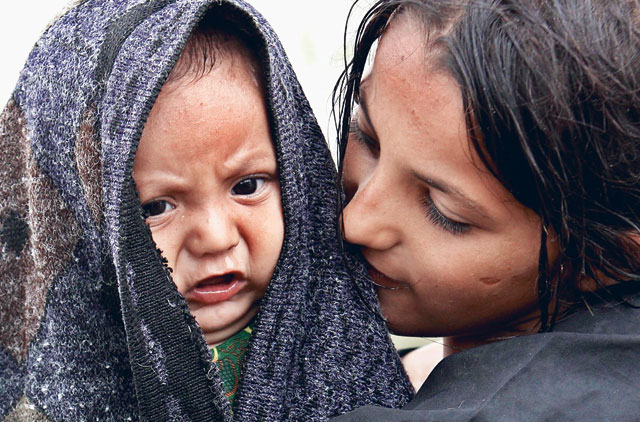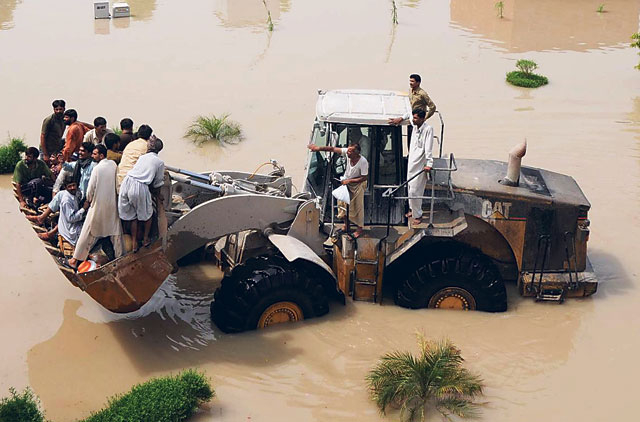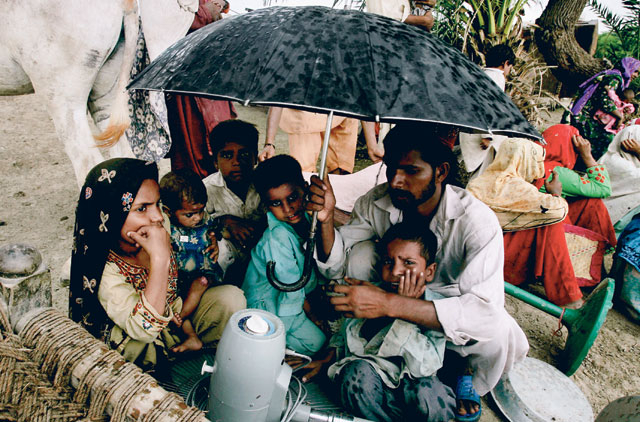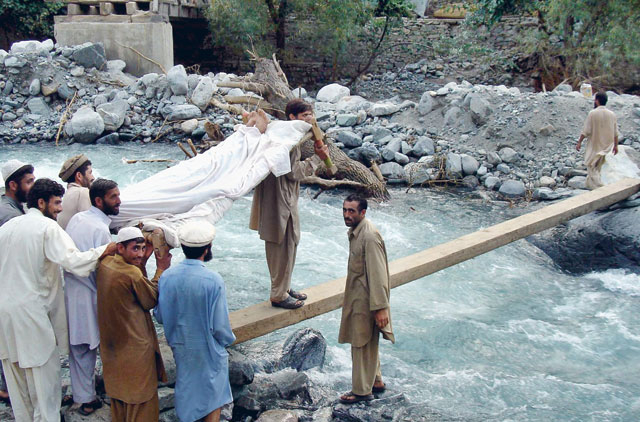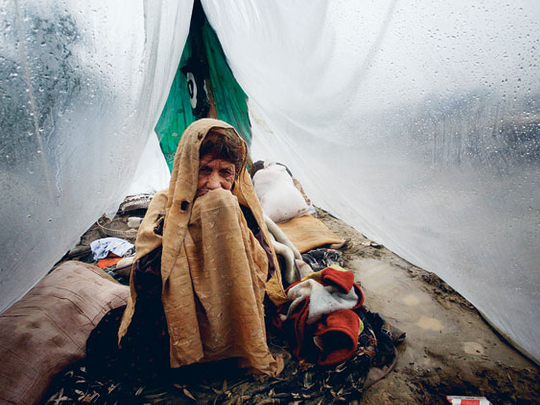
Islamabad: As Pakistan awaits foreign assistance to deal with the mammoth flood relief challenge, Pakistanis desperate to get out of flooded villages threw themselves at helicopters on Saturday.
In the town of Muzaffargarh, near rivers bloated with rain and from as far away as Afghanistan and India merge with the Indus to flow south to the sea, army helicopters dropped packets of rice to people who had moved to higher ground to a cemetery.
Some latched on to helicopter skids as the aircraft took off.
An elderly man fought his way inside one. He looked down and wept.
"Things are getting worse. It's raining again. That's hampering our relief work," said UN World Food Programme spokesman Amjad Jamal.
Dozens of villages have been flooded in Ghoki district on the left bank of the River Indus.
Over 5,000-year-old Mohenjo-Daro archeological treasures are at risk of being inundated by terrible flooding as protective embankments along the Indus continue to disintegrate.
Four agriculturally-rich southern Punjab districts remain swamped with men scavenging their household items in waist deep water as women and children used traditional wooden cots and inflated truck tubes to move to safety.
While crops on 1.5 million acre feet or 80 per cent of flooded districts have been washed away, snake bites, diarrhoea and skin diseases seem unavoidable in flooded areas.
The Sindh province districts on the banks of the River Indus, situated along a 208km stretch between Guddu and Sukkar barrages, yesterday faced the worst flooding with water level rising over 10 million cusecs, a scene never seen since 1971's ‘super floods'.
Even Bhutto's ancestral town Larkana is one of the vulnerable districts with over 30,000 people evacuated.
The Pakistani army, air force and naval helicopters remain busy evacuating stranded villagers to safer areas.
Meanwhile, Sukkur Airport remains the hub for relief supplies as three C-130s continue to deliver tents, plastic sheets, dry rations and medicines for the displaced.
Water levels are rising again in the rivers Neelum, Jhelum and Swat due to new rains. Torrents in Gilgit, Baltistan and Kashmir have resulted in extensive landslides, claiming loss of lives as well as property.
In a televised address to the nation on Friday night, Prime Minister Yusuf Raza Gilani sought international help in mitigating thea worsening crisis.
From extreme northern heights along the Chinese border to southern plain areas nearer the Arabian Sea, most intercity roads, highways bridges, electricity grids and irrigation canals have suffered an unprecedented hit in the terrifying monsoon floods.
The official estimates suggest that 650,000 houses have been damaged in northwestern Khyber-Pakhtunkhawa and central Punjab provinces.
The worst of the flooding, beginning last week, was in the Khyber Pakhtunkhwa province, including the Swat valley.
It swept away the houses of over 140,000 people, killing at least 1,700 and directly affecting five million.
Two million are in urgent need of water, food and shelter, according to the National Disaster Management Authority (NDMA).
Rao Tanveer Iqbal, a veteran relief worker with a UK-based charity, told Gulf News, "Lets accept it that [the] scale of the flooding and needs of the victims is too huge but the failure in starting in the right direction highlights a state of paralysis and indifference in the official ranks."
— With inputs from agencies


